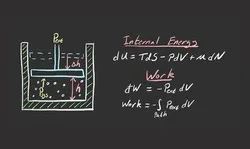
Learn MongoDB in 2 hours 
This beginner's tutorial provides a comprehensive overview of MongoDB, from basic to advanced concepts, in just two hours. Gain the knowledge you need to start using MongoDB quickly and effectively. ▼
ADVERTISEMENT
Course Feature
![]() Cost:
Cost:
Free
![]() Provider:
Provider:
Udemy
![]() Certificate:
Certificate:
Paid Certification
![]() Language:
Language:
English
![]() Start Date:
Start Date:
On-Demand
Course Overview
❗The content presented here is sourced directly from Udemy platform. For comprehensive course details, including enrollment information, simply click on the 'Go to class' link on our website.
Updated in [April 29th, 2023]
Learn MongoDB in simple fastest manner using this beginner's tutorial containing basic to advanced knowledge
What you'll learn:
MongoDB Introduction & Installation
MongoDB CRUD Operations
MongoDB Operators
Working with Arrays
Many more
MongoDB is one of the most popular NoSQL document oriented database written in C++.
This tutorial will help you get started quickly to use MongoDB with lots of hands-on exercises. This tutorial is intended for students and new developers who are eager to learn MongoDB Database in easy and fastest possible manner.
This tutorial will provide you MongoDB concepts which will help you to get started with MongoDB quickly. It will starts with Mongo Introduction and then we will use MongoDB Atlas (Free cloud cluster provided by MongoDB) to setup our environment. We will continue our course by deep diving into various CRUD operations such as inserting, reading, applying filter, updating, deleting and using projections. Then we will work with various relevant operators that can be used with MongoDB on day to day basis. Then we will do a lots of hands on exercise to work with complex data types such as Array i.e performing CRUD with complex types along with projections.
I am just bootstrapping this course but next coming days , this course will get updated with more advance topics such as Working with Indexes, using Aggregation Framework, moving from shell to drivers and start using MongoDB GUI
So let's get started with this exciting course!!!!!
(Please note that we obtained the following content based on information that users may want to know, such as skills, applicable scenarios, future development, etc., combined with AI tools, and have been manually reviewed)
This course is designed to help you learn MongoDB in the fastest and simplest manner. It covers the basics of MongoDB, such as MongoDB Introduction & Installation, MongoDB CRUD Operations, MongoDB Operators, and Working with Arrays. You will also learn more advanced topics such as Working with Indexes, using Aggregation Framework, moving from shell to drivers, and using MongoDB GUI.
Related Learning Suggestions:
To get the most out of this course, it is recommended that you have some basic knowledge of databases and programming. Additionally, you should have a basic understanding of the C++ language. To further develop your skills, you can explore more advanced topics such as Working with Indexes, using Aggregation Framework, moving from shell to drivers, and using MongoDB GUI. You can also practice your skills by doing hands-on exercises.
[Applications]Students and new developers will have a better understanding of MongoDB and its features. They will be able to use MongoDB Atlas to set up their environment and apply CRUD operations, operators, and projections. They will also be able to work with complex data types such as Arrays. Additionally, they will be able to use MongoDB GUI and understand the basics of Indexes and Aggregation Framework.
[Recommend Books]MongoDB in Action, Second Edition by Kyle Banker: This book is an in-depth guide to MongoDB, a leading NoSQL database. It covers the fundamentals of MongoDB, including data modeling, indexing, and querying, as well as advanced topics such as replication, sharding, and performance optimization. It also provides detailed examples of how to use MongoDB in real-world applications. This book is an invaluable resource for anyone looking to learn more about MongoDB.
[Career Paths]1. MongoDB Developer: MongoDB Developers are responsible for designing, developing, and maintaining MongoDB databases. They must have a strong understanding of MongoDB concepts and be able to write efficient queries and optimize performance. They must also be able to troubleshoot any issues that arise and work with other developers to ensure the database is secure and reliable. Developing trends for MongoDB Developers include the use of cloud-based databases, the use of NoSQL databases, and the use of MongoDB Atlas.
2. MongoDB Administrator: MongoDB Administrators are responsible for managing and maintaining MongoDB databases. They must have a strong understanding of MongoDB concepts and be able to configure and optimize the database for maximum performance. They must also be able to troubleshoot any issues that arise and work with other administrators to ensure the database is secure and reliable. Developing trends for MongoDB Administrators include the use of cloud-based databases, the use of NoSQL databases, and the use of MongoDB Atlas.
3. MongoDB Consultant: MongoDB Consultants are responsible for providing advice and guidance to clients on how to best use MongoDB. They must have a strong understanding of MongoDB concepts and be able to provide advice on how to best use the database. They must also be able to troubleshoot any issues that arise and work with other consultants to ensure the database is secure and reliable. Developing trends for MongoDB Consultants include the use of cloud-based databases, the use of NoSQL databases, and the use of MongoDB Atlas.
4. MongoDB Data Analyst: MongoDB Data Analysts are responsible for analyzing data stored in MongoDB databases. They must have a strong understanding of MongoDB concepts and be able to write efficient queries and optimize performance. They must also be able to troubleshoot any issues that arise and work with other analysts to ensure the data is accurate and reliable. Developing trends for MongoDB Data Analysts include the use of cloud-based databases, the use of NoSQL databases, and the use of MongoDB Atlas.
[Education Paths]1. Bachelor of Science in Computer Science: This degree program provides students with a comprehensive understanding of computer science fundamentals, including programming, software engineering, and database management. Students will learn the latest technologies and trends in the field, as well as the principles of computer science and how to apply them to real-world problems. This degree program is ideal for those interested in pursuing a career in MongoDB development.
2. Master of Science in Database Management: This degree program provides students with an in-depth understanding of database management systems, including MongoDB. Students will learn the principles of database design, data modeling, and query optimization. They will also gain experience in developing and managing MongoDB databases. This degree program is ideal for those interested in pursuing a career in MongoDB development and database administration.
3. Master of Science in Data Science: This degree program provides students with a comprehensive understanding of data science fundamentals, including data mining, machine learning, and data visualization. Students will learn the latest technologies and trends in the field, as well as the principles of data science and how to apply them to real-world problems. This degree program is ideal for those interested in pursuing a career in MongoDB development and data science.
4. Master of Science in Artificial Intelligence: This degree program provides students with a comprehensive understanding of artificial intelligence fundamentals, including natural language processing, computer vision, and robotics. Students will learn the latest technologies and trends in the field, as well as the principles of artificial intelligence and how to apply them to real-world problems. This degree program is ideal for those interested in pursuing a career in MongoDB development and artificial intelligence.
Pros & Cons

Teaching was good.

Knowledge in less time.

Clear examples and sample files.

Delivery was robotic.

No supplementary resources.

Course is too short.
Course Provider

Provider Udemy's Stats at AZClass
Discussion and Reviews
0.0 (Based on 0 reviews)
Explore Similar Online Courses

Stress Management : Practical Steps Ways to Deal with Stress

Chemical Thermodynamics I: Thermodynamics and Statistical Mechanics

Python for Informatics: Exploring Information

Social Network Analysis

Introduction to Systematic Review and Meta-Analysis

The Analytics Edge

DCO042 - Python For Informatics

Causal Diagrams: Draw Your Assumptions Before Your Conclusions

Whole genome sequencing of bacterial genomes - tools and applications

Searching for Text in MongoDB

Learning MongoDB - NoSQL database

Querying Geospatial Data from MongoDB
 Related Categories
Related Categories
Quiz
 Submitted Sucessfully
Submitted Sucessfully
1. What is MongoDB?
2. What will you learn in this course?
3. What is the best way to learn MongoDB?
4. What is the free cloud cluster provided by MongoDB?
5. What is the name of the language MongoDB is written in?
Correct Answer: C++


Start your review of Learn MongoDB in 2 hours